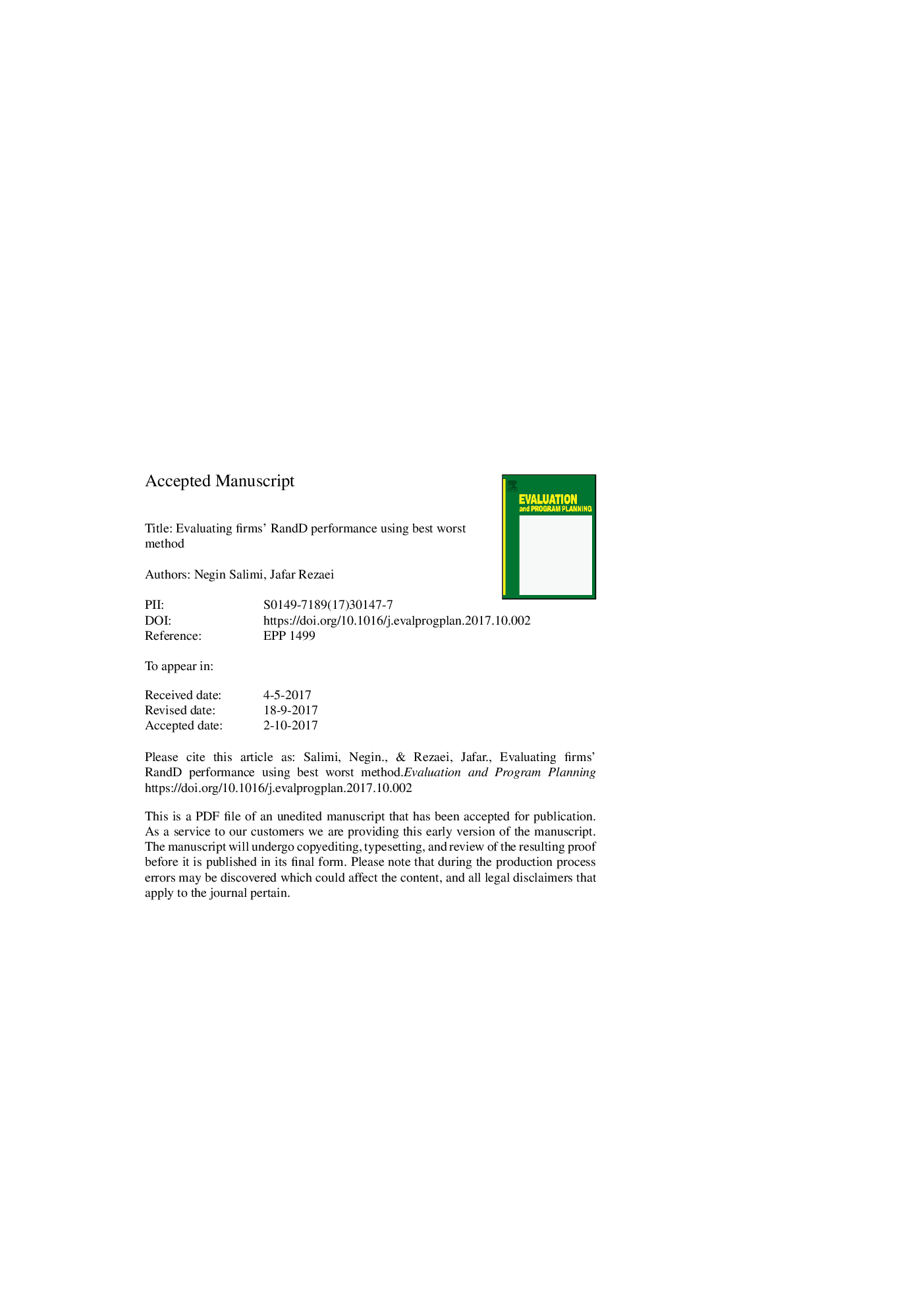| Article ID | Journal | Published Year | Pages | File Type |
|---|---|---|---|---|
| 6792376 | Evaluation and Program Planning | 2018 | 33 Pages |
Abstract
Since research and development (R&D) is the most critical determinant of the productivity, growth and competitive advantage of firms, measuring R&D performance has become the core of attention of R&D managers, and an extensive body of literature has examined and identified different R&D measurements and determinants of R&D performance. However, measuring R&D performance and assigning the same level of importance to different R&D measures, which is the common approach in existing studies, can oversimplify the R&D measuring process, which may result in misinterpretation of the performance and consequently fallacy R&D strategies. The aim of this study is to measure R&D performance taking into account the different levels of importance of R&D measures, using a multi-criteria decision-making method called Best Worst Method (BWM) to identify the weights (importance) of R&D measures and measure the R&D performance of 50 high-tech SMEs in the Netherlands using the data gathered in a survey among SMEs and from R&D experts. The results show how assigning different weights to different R&D measures (in contrast to simple mean) results in a different ranking of the firms and allow R&D managers to formulate more effective strategies to improve their firm's R&D performance by applying knowledge regarding the importance of different R&D measures.
Related Topics
Health Sciences
Medicine and Dentistry
Public Health and Health Policy
Authors
Negin Salimi, Jafar Rezaei,
